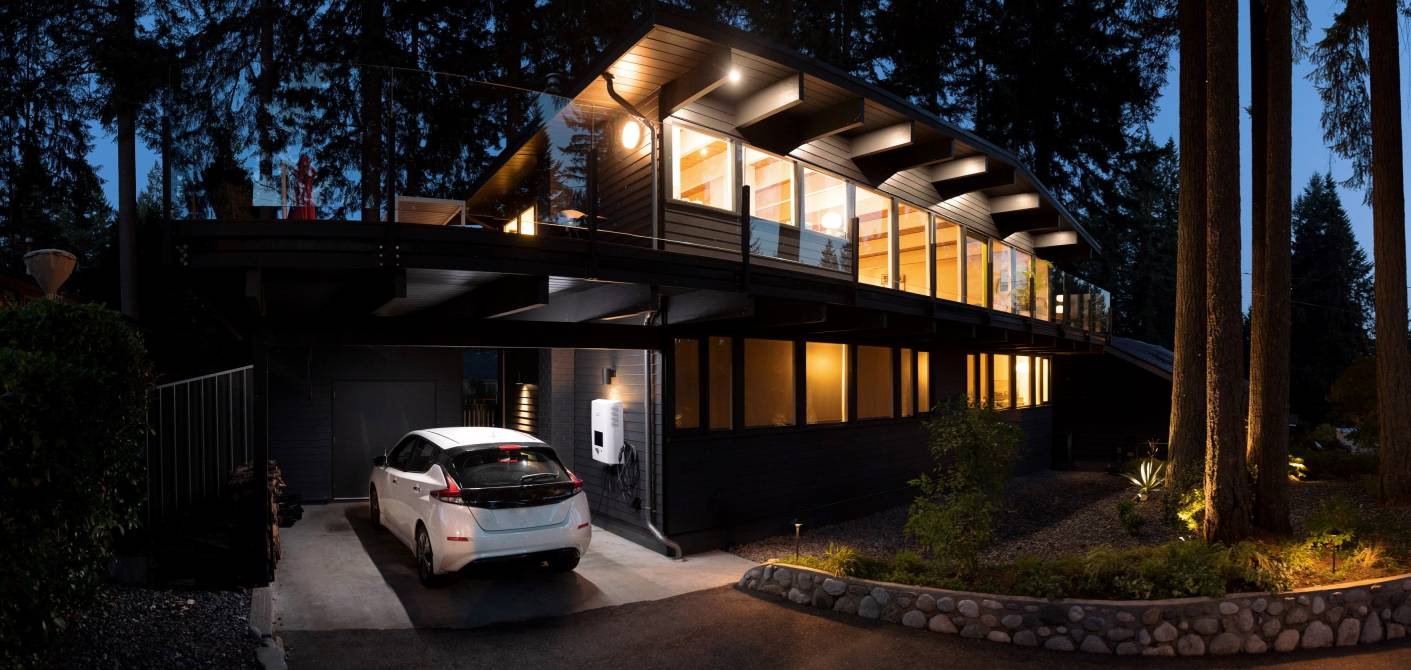Do Batteries Qualify for the Tax Credit ?
If your goal is energy independence, then home backup batteries are essential. But…

Do batteries qualify for the solar tax credit?
Yes, they do! The Inflation Reduction Act has implemented the 30% Residential Clean Energy Credit, which covers the cost of solar equipment and labor, including battery storage. This updated tax credit for solar batteries applies to installations in 2022 and will continue to be at 30% until 2032.
Let's explore how this incentive works and how you can use it for your solar or battery installation.
Why is home backup battery storage essential?
The primary advantage is having a reserve of energy to power your home during power outages and Planned Safety Power Shutoffs (PSPS) that are becoming more frequent due to the increasing frequency and intensity of extreme weather events.
Additionally, having a battery with your solar system allows for energy independence. Think of it as creating your own microgrid.
Also, in areas where local utilities do not offer net metering, battery storage can store solar electricity for use during nighttime and periods of low sunlight.
Is the new solar tax credit applicable to batteries?
You might be thinking "didn't they already answer this question?" But we want to clear up the uncertainty regarding the expansion of solar and battery incentives.
The Inflation Reduction Act (IRA) signed on August 16, 2022, confirms that battery storage is eligible for the 30% federal tax credit, along with solar, wind, geothermal heat pumps, and fuel cells.
The IRA's Section 13302 specifically addresses the Residential Clean Energy Credit for "qualified battery storage technology expenditure." It amends the previous tax credit schedule to maintain a 30% credit for solar and battery equipment placed in service after December 31, 2021, and before January 1, 2033.
The 30% Residential Clean Energy Credit is effective immediately and retroactive to solar and battery storage installed in 2022. So, if you installed solar and/or battery in 2022, your available federal tax credit increases from 26% to 30% of the project's gross cost.
Is all battery storage eligible for the federal tax credit?
The 30% tax credit for solar battery storage is available, but what constitutes a "qualified battery storage technology expenditure?"
To qualify for the 30% credit, the battery storage must meet the following criteria:
First, it must be installed in connection with a dwelling unit located in the United States and used as a residence by the taxpayer. And, it must have a capacity of not less than 3-kilowatt hours.
Most homeowners choose a battery installation that is around 10kWh, so most batteries will easily surpass the minimum to qualify for the solar tax credit. Additionally, there is no maximum size, or cost qualification. You can receive a 30% tax credit on any size battery system.
Home backup power stations
with capacity greater than 3kWh
Is standalone battery storage eligible for the Residential Clean Energy Credit?
Starting January 1, 2023, standalone battery storage (batteries not connected to solar panels) will also qualify for the 30% Residential Clean Energy Credit.
Standalone battery storage can provide a backup energy source for homeowners who experience frequent power outages due to natural disasters or Public Safety Power Shutoffs. It can also be a better alternative to a gas generator for short power outages.
Standalone battery storage can also help homeowners save money by storing electricity during off-peak times when it is less expensive. Time-of-Use (TOU) rates can vary the cost of electricity throughout the day, with peak periods being more costly than off-peak periods. In some cases, peak rates can be as much as 50% higher than during off-peak periods. Battery storage can help shift energy usage to low-cost periods, resulting in significant savings.
Although official guidance from the IRS and the Department of Energy is still pending, it seems that homeowners will be able to claim the Residential Clean Energy Credit for battery storage added to existing solar systems.
For instance, if you installed solar in 2022 and claimed the tax credit, you could add battery storage in 2023 and claim the credit for that as well.
The long and short of it is that most batteries installed between 2022 and 2032 will qualify for the expanded solar tax credit under the Inflation Reduction Act. The only requirements outlined by the Act are that the battery must be installed in a residence in the US and have a capacity of more than 3 kWh.
The 30% tax credit can be applied to lower your tax liability, and any unused credit can be carried forward.
Keep in mind that even though the credit is available for the next ten years, solar and battery storage are long-term investments, so the earlier you invest, the sooner you'll start reaping the rewards.
It is vital to consult a CPA or tax advisor before making any tax decisions. This article is for informational purposes only. We have done our best to gather this information for you, but we are not tax professionals, and this is not tax advice.
More Resources:
Federal Solar Tax Credit Resources - https://www.energy.gov/eere/solar/articles/federal-solar-tax-credit-resources
Database of State Incentives for Renewables & Efficiency® - https://www.dsireusa.org/
Homeowner's Guide to Going Solar - https://www.energy.gov/eere/solar/homeowners-guide-going-solar
Solar Investment Tax Credit: What Changed? - https://www.energy.gov/eere/solar/articles/solar-investment-tax-credit-what-changed
The Inflation Reduction Act: Printable Summary - https://www.seia.org/inflation-reduction-act-printer-friendly
